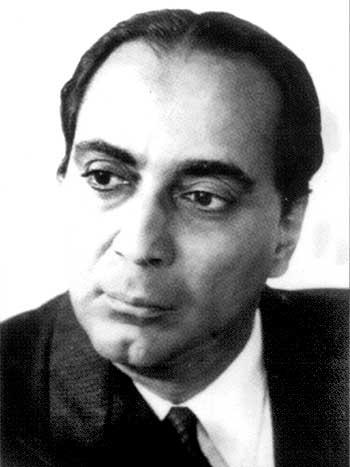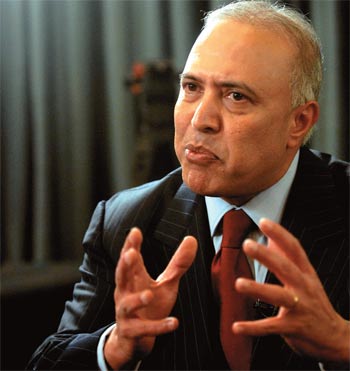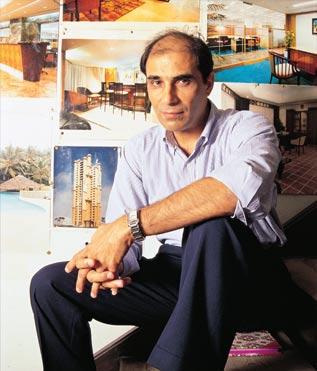
Stories of extreme hardship, braving impossible odds and innumerable sacrifices, abound in the lives of nearly 90 per cent of the students in the country. But among them, some perform exceptionally well. Their academic laurels are so brilliant, that at times their CV looks intimidating. And each one acknowledges that it's the right education that made them what they are today. Careers360 identified 40-odd brilliant students of this country. Most of them came from very dire conditions.
Here, in the third part of the series we feature Homi Jehangir Bhabha, Arun Sarin, Rabindranath Tagore and Hafeez Contractor.
Homi Jehangir Bhabha
Father of India's Nuclear programme
First Class in Mechanical Sciences Tripos exam, UK (1930)
Isaac Newton Studentship for his PhD, Cambridge, UK, 1934
Fellowship at Royal Society of Science, UK
Born in Bombay, Dr Bhabha belonged to an illustrious family with strong nationalistic spirit. His parents took a keen interest in shaping his love for science and he had his own private library. He also picked up his creative instinct and aesthetic sense from his family, who valued fine arts, and western classical music.
At the age of 15, he passed the Senior Cambridge Examination and carried on with his interest in science for two years in Bombay before he joined Caius College in Cambridge in 1927 to study engineering. His love for physics was unusual. He wrote to his father from Cambridge in 1928, "I am burning with desire to do Physics. I will and must do it some time. It is no use saying to Beethoven you must be a scientist for it is a great thing, when he did not care two hoots for science. It is not in the nature of things. I therefore earnestly implore you to let me do physics."
His exposure to Western science, in the labs at Cambridge during 1927-1939, motivated him to be associated with scientific developments, particularly in Physics. It was during this period that Bhabha carried out original research relating to cosmic radiation. His first publication at 24, fetched him the Isaac Newton Studentship to pursue his PhD. Between 1938-1942 he published 20 papers. In 1940, he got Fellowship of the Royal Society of Science, UK.
Back in India in 1939, Bhabha worked at IISc Bangalore, with Dr CV Raman. His proximity to Nehru and his own charisma led to the establishment of two major scientific institutions: Tata Institute of Fundamental Research and Atomic Energy Commission.
As a physicist, he is known for his work on relativistic electron-positron scattering or 'Bhabha scattering' and theory of electromagnetic cosmic ray showers. Bhabha's leadership of atomic energy programme spanned 22 years till 1966. He received the Padma Bhushan in 1954.
Did you know...
A painter, musician and an institution builder, he remained a bachelor, and when quizzed about marriage said, "I am married to creativity."
Part I: Education made him: Dr Manmohan Singh
Part II: Kiran Bedi, CV Raman, Shyam Benegal, P Venugopal
On the next slide: The career of Arun Sarin

Born on October 21, 1954 at Panchmari, Madhya Pradesh, Sarin was an academically bright student. He was equally good at sports like field hockey, boxing and various extracurricular activities. He wanted to follow his father's footsteps into the military by pursuing a career as a pilot, but when his mom protested, he applied and was accepted at IIT, Kharagpur.
He graduated from the IIT in 1975 with a Bachelor of Science degree in engineering in the top 10 per cent of his class and received the BC Roy gold medal for academic excellence. He received a full scholarship to the University of California, Berkeley, Graduate College of Engineering.
In the year 2003, Sarin became the Chief Executive Officer of Vodafone. When he resigned in 2008 from his post Vodaphone was the world's largest mobile phone company by revenue. It was the firm's large market presence in India that catapulted Sarin into the limelight. Currently he serves on the boards of Cisco and Safeway, Inc
Academics
Awards
On the next slide: The career of Rabindranath Tagore

The fourteenth and youngest child of Debendranath Tagore, a religious reformer and Sarada Devi, Rabindranath was born in Jorasanko, Calcutta, to a progressive, wealthy family.
Dissatisfied with formal schooling, young Tagore decided to be schooled at home. At home he learned art, history, science, mathematics, Bengali, Sanskrit, the Upanishads and romantic poetry. Tagore wrote his first poems when he was eight. As his father often travelled to promote Brahma Samaj, Tagore wasn't allowed to venture out much. This, he resisted and often met with insensitive punishment from the house servants.
At 16, he published his first major collection under the pseudonym Bhanushingho. Soon afterwards, he sailed to London to study law at University College London. In 1890, Tagore moved to the large family estate in Shilaidaha, now part of Bangladesh. His wife Mrinalini Devi and children joined him in 1898. There, while collecting rent from the tenants, he closely observed village life which inspired many of his works. This was one of his most fertile periods, where he wrote poems such as Manasi or The Ideal One (1890), and Sonar Tari in 1894. Around this time in 1901, he also he founded Shantiniketan (now known as Visva-Bharati University).
After his wife's death, his first major novel was Ghare-Baire (At Home in the World - 1915). International fame came to him with his English translations of Gitanjali, for which WB Yeats wrote the preface. In 1913, Tagore won the Nobel Prize for his contribution to literature and after which began his extensive tours to many parts of the world. On one such travel to Argentina he met Victoria Ocampo, writer and socialite who became his distant muse.
In 1921, Tagore and agricultural economist Leonard Elmhirst founded the Institute for Rural Reconstruction, "Shriniketan" (Abode of Peace), near Shantiniketan. Tagore became ill in his mid-seventies and never fully recovered. It is said that during the five years of his illness, he produced his best work. Rabindranath Tagore died on August 7, 1941 at Jorasanko, his birthplace, leaving behind hundreds of poems and songs, his vast collection of paintings and drawings; and the various dramas, novels, essays, operas, short stories, travel diaries, correspondence and autobiographies.
Did you know?
On the next slide: The career of Hafeez Contractor

Redefined Mumbai and Pune's skyline
Graduate Diploma in Architecture, Rachna
Sansad Academy of Architecture, Mumbai (1975)
Graduation from Columbia University in New York City (Tata Scholarship)
He is as controversial for his bold views on developing Mumbai city, whether it is the greening of an increasingly concretised Mumbai, or reclaiming more land from the sea. In Class 4 or 5, a teacher predicted that he could be nothing but be an architect.
After school, he was refused admission to an architecture course due to his poor academic record. He decided to join the army, but after his aunt dismissed the idea he took admission in the Arts stream at Jai Hind College in Mumbai. But fate had other plans.
Homi Dallas, the then president of the Indian Institute of Architecture, got him admitted to the Rachna Sansad Academy of Architecture in Prabhadevi, Mumbai. He set up his own office in 1982 with a staff of four, which has 350 employees, today. He is credited with building some of the most famous buildings in India including the Hiranandani Gardens in Mumbai.
Did you know?